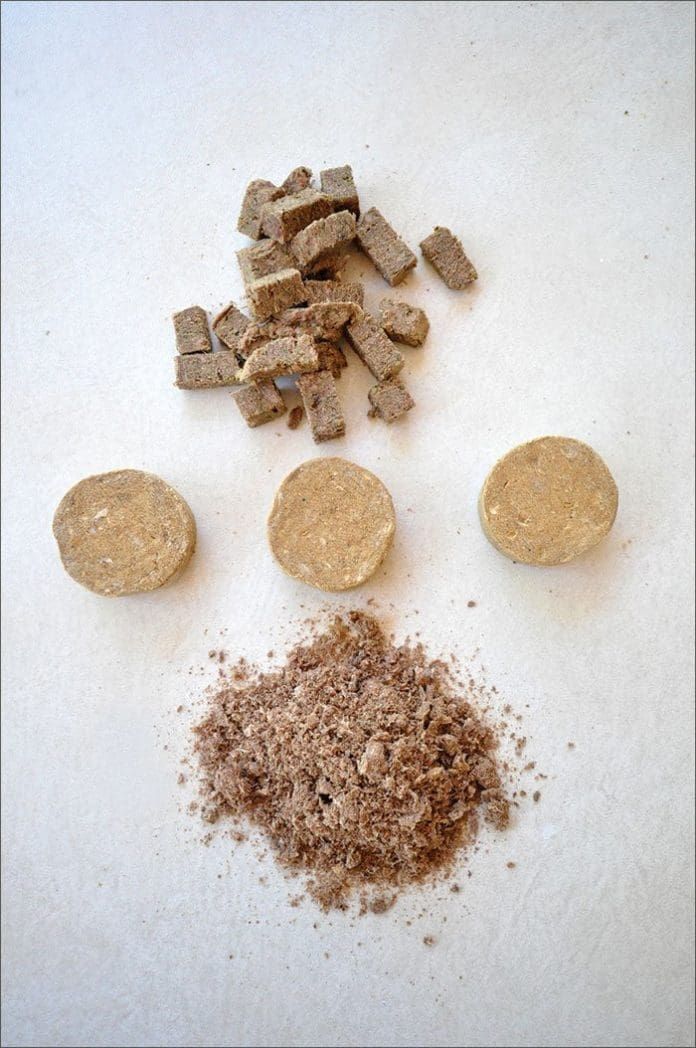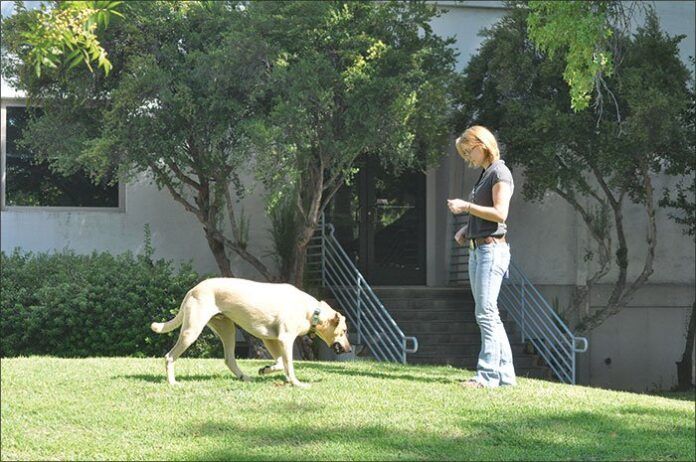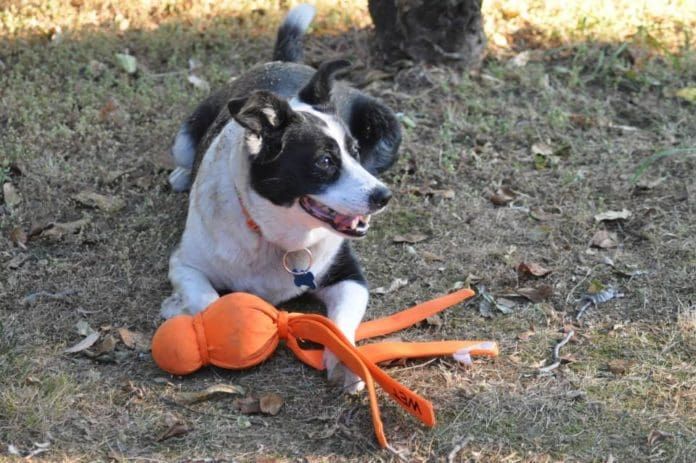Occasionally we are asked to rate the various options that owners have for feeding their dogs, based on the relative “healthiness” of each major type of food: home-prepared (raw or cooked); commercial raw, frozen diets and freeze-dried or dehydrated dog food raw diets; canned food, and kibble. Actually, in our opinion, that list of food types is ranked accurately right there, from best to worst, in terms of their potential for improving or supporting a dog’s peak health.

On what do we base that ranking? While it’s difficult to get nutritionists to agree on just about anything, it’s likely that most would agree on the following general idea: that a diet that was formulated to be “complete and balanced” and comprised of fresh, lightly processed or unprocessed species-appropriate ingredients is healthier than a “complete and balanced” diet containing highly processed ingredients that are uncommonly consumed by a given species in nature. That general theory explains our high esteem for the dehydrated and freeze-dried diets that we’ve listed in the attached 2014 Dehydrated Dog Food Review
ATTENTION: In the April 2018 issue, Whole Dog Journal published a new, updated list of approved freeze-dried raw dog food.
We’ve lumped a lot of disparate diets into this category. Even though they vary widely in terms of ingredients, “rawness,” manufacturing process, finished form, and protein and fat levels, what all of these diets share is their high inclusion of high-quality animal protein and fats, and a method of preservation that only lightly alters or damages the nutrients in the food: drying. The idea is to remove moisture from the food; the less moisture that is contained in a food, the longer its nutrients will remain unspoiled and available to the consumer (your dog).
Drying can be accomplished at low temperatures, but it takes longer and leaves meats and fats vulnerable to oxidation (spoilage); most dried foods are prepared with temperatures of 140ºF to 180ºF. (Food can rot when kept in temperatures between 140ºF to 32ºF; If it’s held in temperatures colder than 30ºF, it freezes; if it’s exposed to temperatures higher than 180ºF, it will start to cook.) Dehydrators actually lightly cook the food as it dries, altering the cellular structure of meats, fruits, and vegetables. In contrast, proper freeze-drying doesn’t affect the appearance or taste of foods as much.
Freeze-dryers expose foods to low temperatures, freezing them relatively quickly, and then to high air pressure (freeze-drying machines resemble large pressurized gas tanks). When the pressure inside the chamber is high enough, small heating units are turned on, heating the trays that the food sits on, and causing the frozen water (a solid at that point) in the foods to transform into a gas (water vapor). Pumps pull the vapor out of the chamber while keeping the internal air pressure high. The term for freeze-drying is sublimation: the act of a solid shifting directly into a gas.
It sounds radical, but the process actually leaves most foods less damaged than dehydration. Freeze-drying doesn’t shrink or toughen most food ingredients, and it leaves most aromas and flavors in the food intact. There are some food compounds that don’t freeze-dry well; those that contain vinegar or alcohol don’t sublimate nicely, but these are not common ingredients in canine diets!
Some owners seek out these diets specifically for their rawness; they believe feeding raw meat is natural and beneficial to their dogs. If a raw diet is your chief motivation for considering these diets, avoid the products that contain dehydrated ingredients in favor of the ones that contain freeze-dried ingredients.
See a list of the best freeze-dried raw dog foods here.
Other Benefits of Dehydrated Dog Food
In addition to being (mostly) raw and lightly processed, dehydrated diets offer a number of other benefits to dogs – and their owners.
Very low-moisture foods can be stored longer at room temperature (in unopened packages) without spoiling or rancidity than conventional kibble. Most dehydrated diets contain less moisture than conventional kibble, which generally contains about 10 percent moisture. The less moisture there is in a food, the less biological activity can occur.
Dehydrated foods weigh less and are more compact than foods containing more moisture. This makes them especially well suited for travel. It also means they cost less to ship.
When rehydrated, these foods are highly palatable to most dogs. It may be due to the concentration of flavor in dehydrated food ingredients or their light processing.
As a generalization, the makers of these products are targeting the top end of the market, and have an extraordinary commitment to sourcing top-quality ingredients. In many cases, “human-quality” (“edible”) ingredients are used, though only one company can legally make this claim (The Honest Kitchen, because every single ingredient in the product is human-quality (the legal term is “edible”) and the products are made at a human food manufacturing plant.
The Different Kinds of Dehydrated Dog Food
As we mentioned earlier, the dried foods discussed here are diverse in content, appearance, and form. Some contain grains and some don’t. Some include lots of vegetables, fruits, and herbs, and some are almost all meat. Some utilize organic ingredients, and some don’t. And some manufacturers utilize pasteurization of some kind, and some don’t. (For more on this, see “Safety Issues,” below.)
Most of these products are meant to be rehydrated with water, though most can be fed without rehydration.
Some of these products are presented in a dried “patty” or “medallion” form; others have been dried into nuggets or dried and then sliced into cubes. Others are very powdery, which makes them turn into a sort of mush or gruel, depending on how much water you add. Still others have relatively large chunks of identifiable dehydrated meats, fruit, and/or vegetables mixed into a powdery meat base. This can be either an advantage (if your dog enjoys the contrast in taste and mouth-feel) or a disadvantage (if your dog seeks out only the chunks or mush and eschews the other).
The most significant difference between these foods and more conventional commercial products, though, is the high fat and, to a slightly lesser extent, high protein levels that most contain. Some are very high in fat and protein; others compare in these respects to conventional kibble. Always check the guaranteed analysis when switching to a product in this category; they are so nutrient-dense that you may have to significantly reduce the volume of food that you feed your dog in order to prevent him from gaining too much weight.
The Cost of Dehydrated Dog Food
The cost of feeding this sort of diet may be prohibitive for many dog owners. These products are pricey. In general, the freeze-dried products cost the most, because freeze-drying is an energy-intensive process. (For what it’s worth, however, shipping costs of these light-weight foods are minimal!) My guess is that they are fed mostly under the following conditions:
– Cost is not a factor (wealthy owner).
– Owner has one dog, or very small dogs (and so won’t need to buy large amounts).
Products are used as “complete and balanced” training treats, rather than sole diet.
Owner usually feeds a raw diet (home-prepared or otherwise) but is traveling, so one of these diets is used short-term replacement.
– Dog is extremely picky (and thin), but will eat these foods with relish. (We frequently hear about this with the freeze-dried foods, which seem to retain their palatability very well.)
– Dog’s health is generally precipitous, but currently well-managed thanks to one of these diets, so it makes the most sense to “pay for the food, rather than the vet.”
– Dog’s health is poor, and these highly palatable products are being used as a short-term tactic to keep him eating.
Safety Issues with Raw Dog Food
Raw diets aren’t for every dog or owner. These foods will be especially attractive to owners who already feed a raw diet to their dogs, or who have researched raw diets and who are ready to take responsibility for feeding their dog a raw diet (and perhaps, have the support already of a veterinarian who is comfortable with and knowledgeable about raw diets).
If you are fearful about the potential for exposing your dog to pathogenic bacteria such as Salmonella or Listeria, or you have an immune-compromised dog, you may want to either skip these diets, or seek out the ones who pasteurize their products and utilize a vigorous “test before releasing” program, such as Stella & Chewys.
Understand that experienced raw feeders, as they are known, are not afraid of these bacteria. They frequently point out that there have been far more recalls of conventional kibble that is “contaminated” with Salmonella than raw food products, and very few dogs have gotten ill as a result of eating these foods. Dogs have much sturdier digestive tracts than humans, and only very rarely have a problem eating food that is contaminated with these bacteria. (Dogs with compromised immune systems, like humans with similar conditions, would be most at risk.)
Some companies use high pressure processing (HPP, also known as high pressure pasteurization or Pascalization) to kill any pathogenic bacteria that might be present in the food; others use HPP only on products that contain poultry (the most likely meat to be contaminated with bacteria); and still others rely entirely on buying the best possible meats, handling them with care, and using superior sanitation throughout the manufacturing process. Ask the maker of the food you are considering what they do (or don’t do) to pasteurize their products.
Our List of Approved Dog Foods
ATTENTION: In March 2018, Whole Dog Journal published a new, updated list of approved freeze-dried raw dog food.
The companies we’ve highlighted on the following pages make extremely good dog foods, but as always, only you can determine which ones are right for your dog and your budget. As a comparison tool, we selected one variety from each manufacturer and listed its ingredients and guaranteed analysis. To help directly compare the unique formulation approaches taken by each company, we selected the “beef” formula whenever that variety was available.























